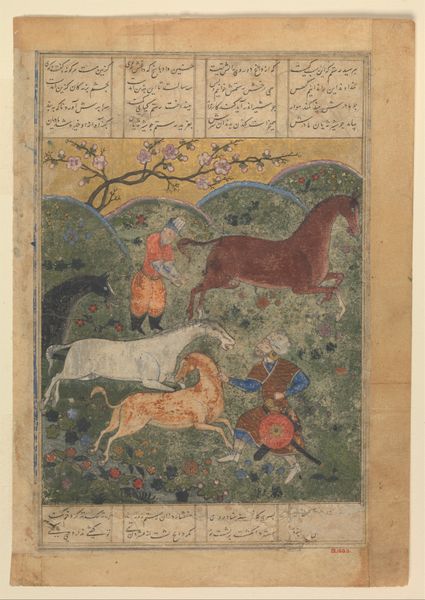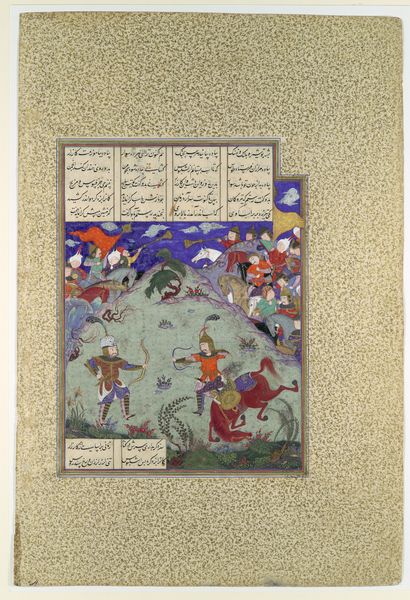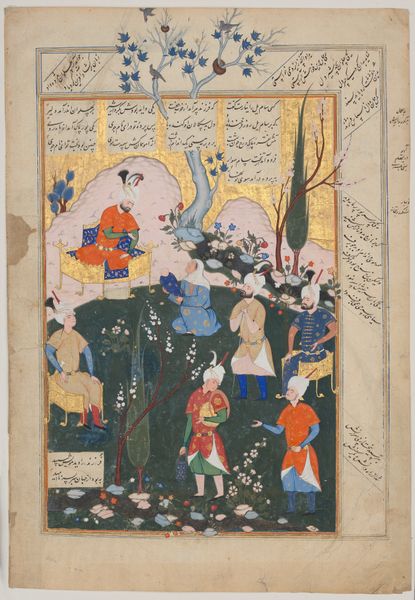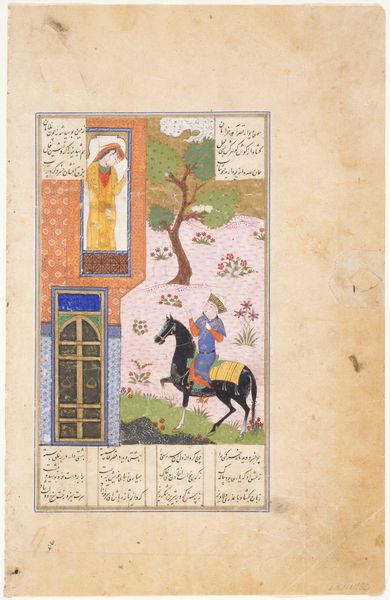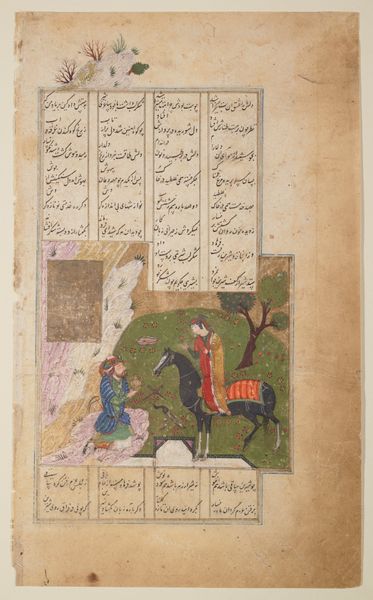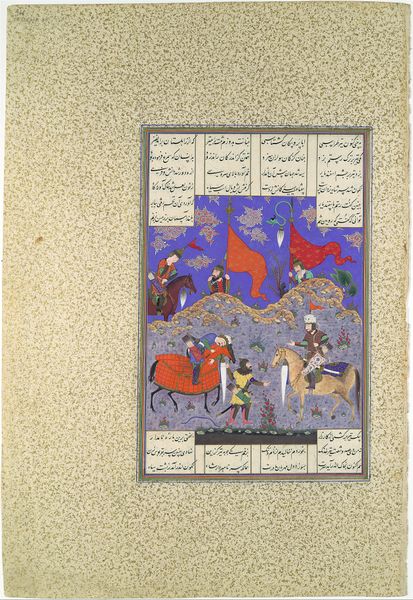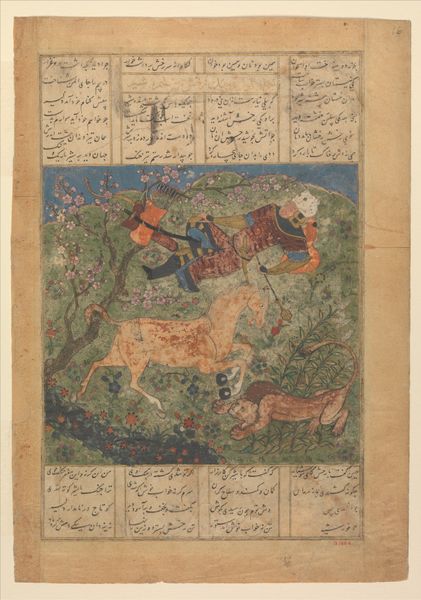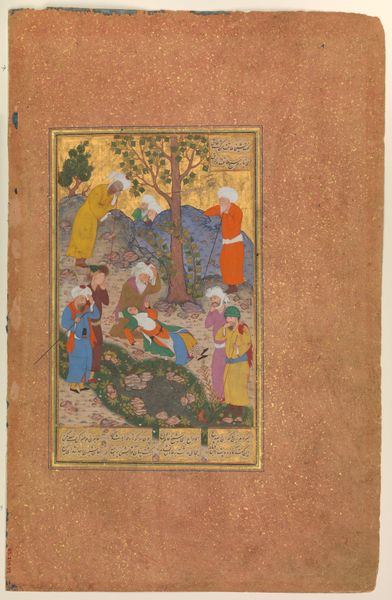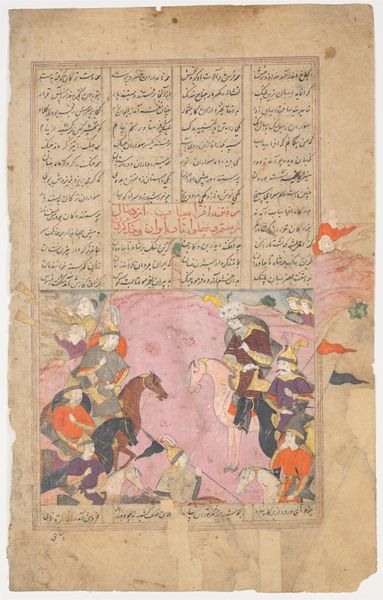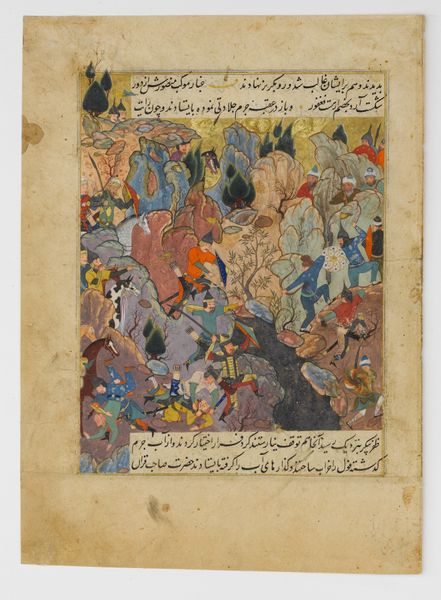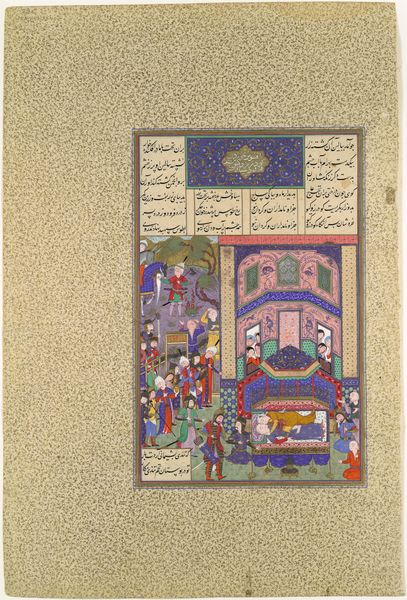
"Bizhan Receives an Invitation through Manizha's Nurse", Folio 300v from the Shahnama (Book of Kings) of Shah Tahmasp 1500 - 1555
0:00
0:00
painting, watercolor
#
water colours
#
narrative-art
#
painting
#
landscape
#
figuration
#
watercolor
#
coloured pencil
#
horse
#
men
#
islamic-art
#
mixed media
#
miniature
#
watercolor
Dimensions: Painting: H. 12 5/8 in. (32.1 cm) W. 7 1/4 in. (18.4 cm) Entire Page: H. 18 11/16 in. (47.5 cm) W. 10 5/8 in. (27 cm)
Copyright: Public Domain
Curator: Let's turn our attention to "Bizhan Receives an Invitation through Manizha's Nurse," a vibrant folio from the Shahnama, or Book of Kings, painted sometime between 1500 and 1555. Editor: Immediately, I'm struck by its fairytale quality. The lush, layered landscape feels both inviting and dreamlike. The palette is just lovely. Curator: Indeed. These illustrations from the Shahnama were not mere illustrations, but elaborate pieces commissioned by the elite. Think about the layers of labor embedded here. The paper making, the grinding of pigments for watercolours and coloured pencils, and then the precise application...all of it under court patronage. Editor: And beyond that visible labor, we need to recognize the cultural labor at play, reinforcing social hierarchies and power structures. Look at Bizhan, so passively receiving this invitation, literally above everyone else. It evokes conversations about courtly love, gender roles, and the gaze – who is inviting whom, and why? Who benefits from these social exchanges? Curator: Excellent points. The deliberate craftsmanship further underscores these relationships. Every detail, down to the gold leaf in the upper register, was designed to create a sense of magnificence, reinforcing royal authority through exquisite, hand-wrought production. Editor: Consider the figure of the nurse; such go-betweens were the only way royal court women could convey any desire or emotion, using their maids as intermediaries for veiled acts of resistance and rebellion. She is neither fully in or fully out. This reflects the lives of so many women on the margins, maneuvering for influence in societies in which they have little or no agency. Curator: A wonderful insight! It really adds depth to our reading of what may seem like a beautiful illustration on the surface. These works were intended as much more than visual narratives; they shaped identity. Editor: Exactly. The image is beautiful and valuable because we can see how materials were arranged for cultural effect. Curator: Precisely. It is rewarding to really delve beneath the rich material to explore layers of hidden histories and power structures.
Comments
No comments
Be the first to comment and join the conversation on the ultimate creative platform.
